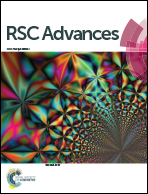Ultrasonic decrosslinking of crosslinked high-density polyethylene: effect of degree of crosslinking
Abstract
Decrosslinking of peroxide crosslinked high-density polyethylene (XHDPE) of different degrees of crosslinking by means of an ultrasonic single-screw extruder (SSE) is investigated. Barrel pressure and ultrasonic power consumption during extrusion are recorded. Swelling tests, rheological tests, infrared spectroscopy, thermal analysis and tensile tests are used to elucidate the structure–property relationship of decrosslinked XHDPE. It was found that a more intensive rupture of the crosslinked network occurs in XHDPE of a higher degree of crosslinking. Analysis based on the Horikx function shows that the type of preferential bond breakage during decrosslinking of XHDPE of various degrees of crosslinking is not determined by the bond energy alone but is also influenced by structural characteristics of the network. The activation energy of viscous flow of sols extracted from various decrosslinked XHDPEs supports the analysis based on the Horikx function. The dynamic, thermal and tensile properties of the decrosslinked XHDPE are greatly affected by the type of preferential bond breakage. A significant improvement in the processability and mechanical properties of decrosslinked 2% peroxide cured XHDPE is achieved due to the occurrence of a highly preferential breakage of crosslinks during ultrasonic decrosslinking.


 Please wait while we load your content...
Please wait while we load your content...